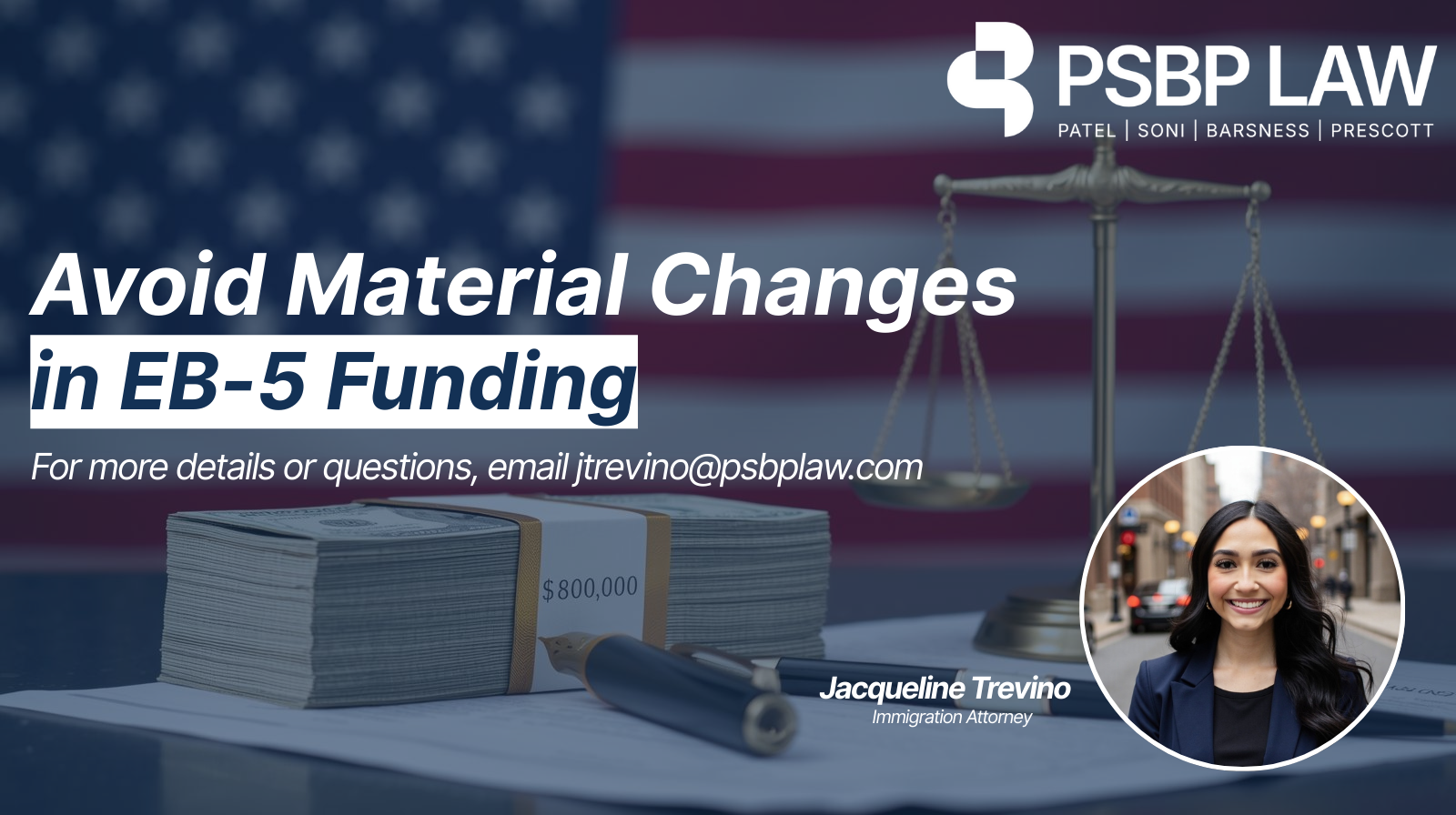The EB-5 process relies heavily on thorough documentation and strict compliance with USCIS regulations, especially regarding the source and path of investment funds. If you’re pursuing a partial investment, it’s critical to clearly outline and disclose the full source and path of the total intended investment amount (a minimum of $800,000 plus any applicable administrative fees) in your initial filing, even if the remaining funds will be invested later with project developer approval.
Once your I-526 or I-526E petition is filed, you cannot make substantial changes to your investment without risking a denial or requiring a new petition. That’s why early planning and full funding are crucial.
A material change is a change that could influence or affect USCIS’s decision about whether you meet the eligibility requirements at the time of filing. When it comes to EB-5, changes to the following can be considered material, depending on timing and context:
- The source or path of funds
- The business plan
- The capital investment structure
For example, an investor might contribute $400,000 upfront and plan to invest the remaining $400,000 within 4 to 6 months after filing to meet the $800,000 EB-5 investment requirement. While this partial investment approach is permitted by the EB-5 program, it must be carefully managed and planned for. Additionally, Form I-526 or I-526E cannot be adjudicated until the full $800,000 investment has been made.

Best Practice to Avoid Material Change Issues:
- Ensure adequate Source Documentation at Filing
- USCIS requires that the entire investment amount be traced to a lawful source and fully documented at the time of I-526 or I-526E filing.
- If documentation is provided for only the initial installment, the petition could be delayed by a Request for Evidence (RFE), as USCIS requires proof of the full investment amount and a credible source of funds. Failure to provide this may ultimately result in a denial.
- Fully fund before filing, if possible
- Whenever feasible, complete the entire investment before filing the I-526 or I-526E petition. This clearly demonstrates that the full amount is already committed and at risk without need for investment of any balance. It also allows USCIS to move forward with adjudication without potential delay.
- Make the remaining investment, if any, as soon as possible
- If you’re pursuing a partial investment strategy, minimize the time between the initial and remaining investment.
- Do not Change in Source of Funds
- If you plan to use different sources for the remaining investment (e.g., income, gifts, or loans), and those were not disclosed in the original petition, USCIS may view this as a material change.
The EB-5 process is not just about investing money into a project. It’s about proving, in detail, that the investment was legally obtained, properly transferred, and meets all regulatory requirements. Partial investments can be appealing, especially for investors needing more time to liquidate capital, but they introduce risk if not handled carefully.
If your EB-5 source of funds involves multiple stages or different sources, it’s critical to plan thoroughly, document everything, and avoid changes after filing.
If you have any questions regarding EB-5 source of funds, please email us at rpatel@psbplaw.com and jtrevino@psbplaw.com.